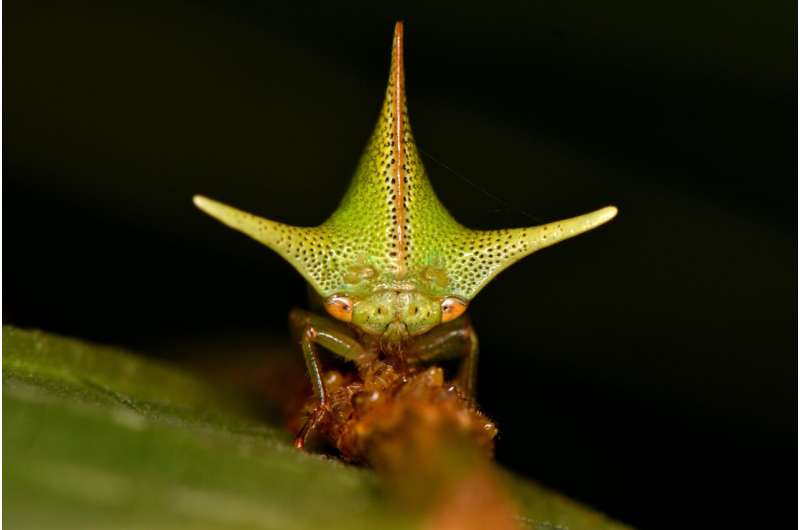
Researchers at the University of Bristol have proposed a groundbreaking hypothesis linking the bizarre body shapes of treehoppers to their ability to detect static electricity. This idea is outlined in a new study published in the Proceedings of the National Academy of Sciences. The research was conducted by Dr. Sam England, who completed his Ph.D. at Bristol in 2023, alongside Professor Daniel Robert, an expert in bionanoscience.
Treehoppers, known for their remarkable morphological diversity, include over 3,000 species with distinct features such as horns, spines, and trident-like shapes. Despite their intriguing appearances, scientists have struggled to explain the evolutionary advantages of these extreme forms. While some theories suggest functions like camouflage or physical defense, they do not universally apply across the entire treehopper family.
Building on earlier discoveries that insects such as bees and caterpillars can sense static electricity, Dr. England and Professor Robert sought to determine if treehoppers’ unique shapes could enhance their electroreception capabilities. Their research indicates that predatory wasps emit static electricity, prompting treehoppers to retreat from electric fields.
Using computational modeling, the researchers found that the distinctive morphologies of treehoppers enhance the strength of the electric fields around them, likely increasing their sensitivity to static electricity. They also discovered significant differences in the electrostatic charges of predatory wasps compared to the friendly stingless bees that often protect treehoppers. This suggests that treehoppers might be able to identify friends from foes based solely on electrical signals.
Dr. England remarked, “We think our study provides a really exciting launch pad for investigating static electricity as a driver of organismal morphology more generally.” He emphasized the potential for similar mechanisms to explain the extreme shapes found in various other insects, spiders, and plants.
The research team plans to further explore how different treehopper shapes may adapt to specific electrical environments. Dr. England noted, “If we can link treehopper shapes to certain aspects of their electrical ecology, like specific predators which approach from certain angles with particular static charges, this would really begin to strongly support our ideas around static electricity as an evolutionary driver.”
The findings from this study not only shed light on the evolutionary pressures faced by treehoppers but also open up exciting avenues for future research into the role of electroreception in other species. More information can be found in the study titled “Electroreception in treehoppers: How extreme morphologies can increase electrical sensitivity,” published in Proceedings of the National Academy of Sciences.
As researchers continue to unravel the complexities of evolution, this study highlights the potential influence of environmental factors, such as static electricity, in shaping the physical characteristics of organisms.







